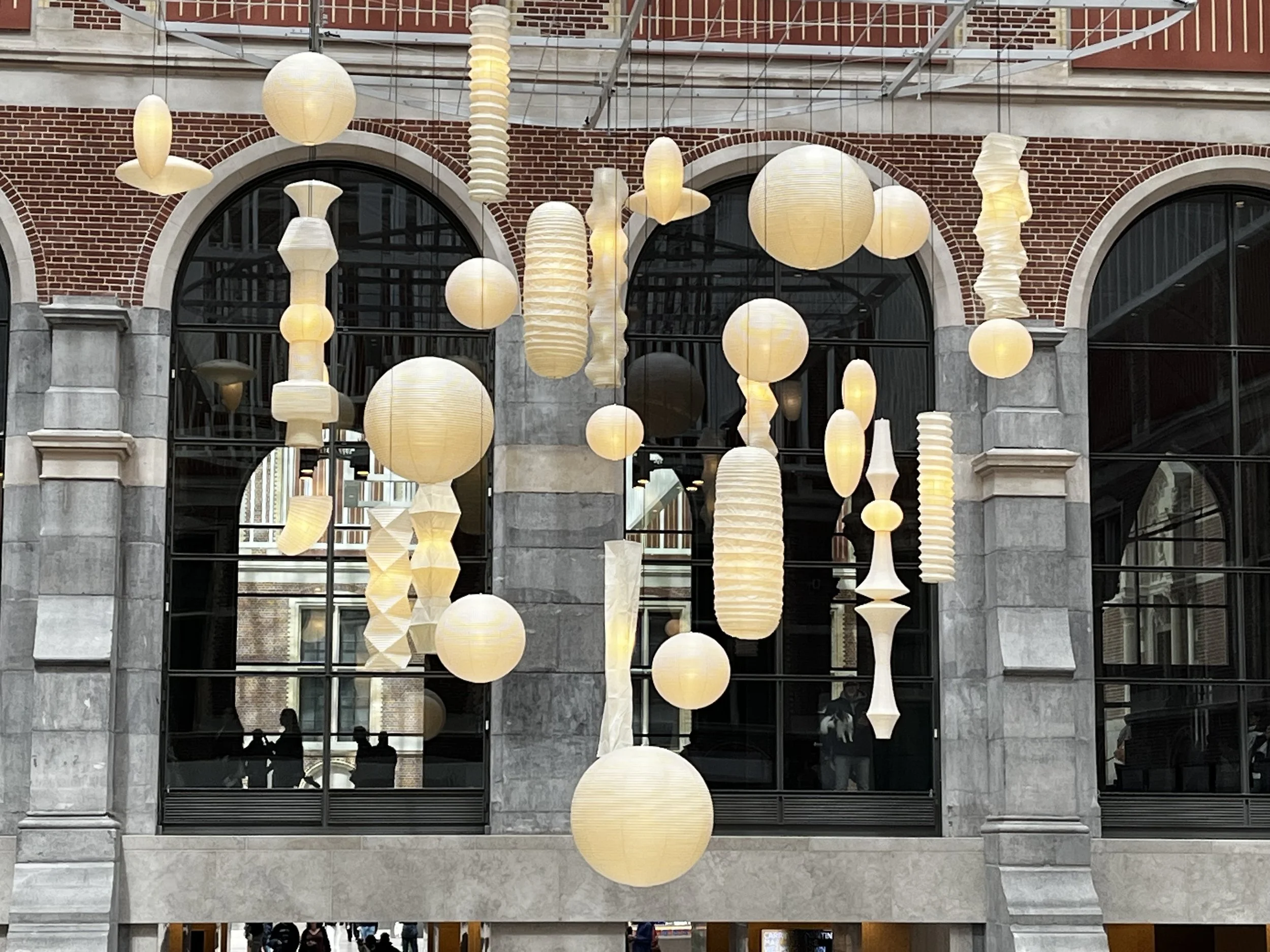Isamu Noguchi: Everything is sculpture.
Summer Exhibition at the Rijksmuseum Gardens
“Noguchi embraced the universal language of sculpture championed by Brâncuși and the surreal biomorphism of the artists he encountered in Paris and New York,” writes curator Frits Scholten in the catalog accompanying this year’s annual exhibition in the Rijksmuseum Gardens. This year features works by the American artist of Japanese descent, Isamu Noguchi, for whom meeting Constantin Brâncuși was a pivotal moment in his artistic journey.
Isamu Noguchi, Kronos, brons, 1947, photo: Claudia Marcu
For the third consecutive year, the artistic spirit of Brâncuși is present in these outdoor exhibitions. Coincidence? The guest curator for the outdoor exhibitions each year is Alfred Pacquement, former director of the Pompidou Center in Paris. “I think it’s a coincidence—if not, at least a necessity—that so many sculptors reference Brâncuși, because he is undoubtedly one of the most important sculptors of the 20th century. When you work in sculpture, it’s impossible to avoid encountering Brâncuși at some point,” Pacquement explains.
Isamu Noguchi: Brâncuși’s Assistant
Isamu Noguchi was born in the United States to an American writer mother and a Japanese poet father. He was raised in Japan until age 13, when his mother sent him back to the U.S. Encouraged to attend art school, Noguchi chose sculpture as his path. He discovered Brâncuși through an exhibition organized by Marcel Duchamp at the Brummer Gallery in New York. Shortly thereafter, in 1927, at only 23 years old and on his first trip to Europe, he arrived in Paris. For several months, he worked as Brâncuși’s assistant, communicating solely through the language of art.
“For Noguchi, this was a very important moment,” Pacquement adds. “If you look at the work he produced after meeting Brâncuși, it is vastly different from what he created before. In fact, he discovered abstraction in Brâncuși’s studio.”
“Noguchi learned from Brâncuși how to work stone, to do what the French call taille directe, working directly into stone with hammer and chisel. This was a different approach to sculpture, not very fashionable at the time when most sculptures were made using molds. Working directly with stone, sometimes leaving natural, untreated parts and only shaping small sections. That is where Brâncuși’s influence is clear in Noguchi’s sculptures,” Pacquement said.
Noguchi himself recalled, “He taught me how to cut correctly and straighten edges, then by carving grooves, how to level the space between them, and finally how to bring a cube to a right angle. He was insistent on the proper way to use each tool, depending on the work and material, and the respect each deserved.”
Isamu Noguchi, Olmec & Muse, basalt, 1985, photo: Claudia Marcu
Everything Is Sculpture
Noguchi worked with a vast array of materials—stone, andesite, wood, aluminum, steel, plastic, ceramics, and more—and for him, everything was sculpture. “Any material, any idea freely born in space, without obstacles, I consider sculpture,” Noguchi once said.
The museum or gallery space was never enough; his sculptures often inhabit gardens and parks, especially in the U.S. and Japan, where they frequently take on a social dimension.
Alfred Pacquement describes Noguchi’s work as “a true dialogue between East and West, between European and American traditions and Japanese tradition; a dialogue between abstraction and figuration; a dialogue between different materials.”
Brâncuși’s influence is a constant, at least in this Rijksmuseum exhibition. Never have I heard the Romanian artist’s name mentioned as often as here, whether referring to Noguchi’s garden sculptures or the few pieces displayed inside the museum. A prime example is the Akari lamps floating like clouds above visitors in the museum’s entrance hall. The forms and themes Brâncuși explored resonate strongly in Noguchi’s work, think of the Infinite Column, for instance.
Isamu Noguchi,"Akari", Atrium Rijksmuseum. photo: Claudia Marcu
The ceramic piece "Love Between Two Plates" recalls Brâncuși’s "The Kiss", though interpretation is left to the viewer’s imagination.
Left - Isamu Noguchi, Love Between Two Plates, ceramics, 1950, photo: Claudia Marcu
Right - Constantin Brâncuși, The Kiss, stone, 1907-08, photo: Art Muzeum Craiova
Note:
In 2023, Richard Long’s work Life Line reminded me of Brâncuși’s Infinite Column. Two contrasting columns: one horizontal, ephemeral; the other vertical, eternal.
Last year, Korean artist Lee Ufan spoke of his ongoing search for infinity: “Infinity is extendable; with imagination, you can go in any direction: up, down, left, right. Infinity has no limits. That is why it is so important to me.” One of his works, "Narrow Path of Heaven", also evoked Brâncuși’s column: a long, narrow strip of grass in the museum garden was cut away and replaced with a mirror marked by two stones. The reflective surface mirrored part of the museum and the infinite sky above.
left – Linia vieții, Richard Long, 2023, photo: Rijksmuseum
right – Drumul cerului ingust Lee Ufan, 2018, photo: Claudia Marcu







